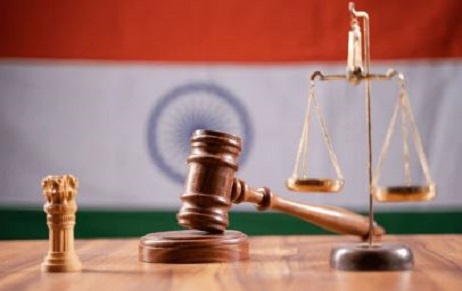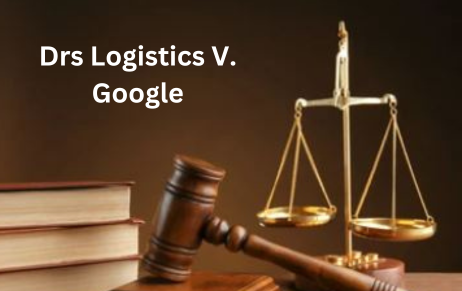ABSTRACT The project employs doctrinal research methods, i.e. secondary research which involves writing on basis…
Horlicks Ltd. v. Heinz India: Delhi High Court held that comparative advertising by use of Competitor’s mark allowed
In a recent judgment dated 17th December, 2018 the Delhi High Court has ruled that the law allows comparative advertising as long as the use of competitor’s mark is honest.
Facts of the Case[1]:
The suit in question was filed by the plaintiff for permanent injunction against advertisement when he discovered in the newspaper “The Telegraph” that the comparison of his product i.e.; Horlicks with Complan which depicted that “One Cup of Complan equals two cups of Horlicks”. It further said one cup of Complan gives 5.94 gm of protein while two cups of Horlicks gives the same amount of protein. The Counsel appearing for the plaintiffs contended that the advertisement by the defendants is intentionally and deliberately disparaging its product Horlicks. He also contended that the impugned advertisement has wrongly shown the comparison between the products and has misguided the customers.
Issues:
1. Can a limited amount of disparagement be used in Comparative Advertising?
2. How to determine whether a certain advertisement is misleading?
3. Can “per serving” size be a valid ground for Comparison and can is it necessary for the advertiser to compare all the features of product in Comparative Advertising?
4. Can advertisement be protected under Article 19 (1) (a) of the Indian Constitution as a form of speech?
Plaintiff Contentions:
1. The plaintiff contended that the Comparison of the products on the basis of “per serving” size is misleading.
2. The plaintiff contended that the statement in the advertisement ‘From now on, Only Complan’ sought rejection of Horlicks over Complan.
3. The plaintiff contended that the advertisement compares only one ingredient of the product and was trying to misguide consumers that consumption of their product directly leads to growth.
4. The plaintiff also contended that the right under Article 19(1) (a) is only available to the citizens of the country and not to corporate entities as well as held in Allagapuram R. Mohanraj & Ors. Vs. Tamil Nadu Legislative Assembly[2]. In Tata Press Ltd. vs. Mahanagar Telephone Nigam Ltd. & Ors[3] it was held that the promotion and advertisement of one’s own business could not be a part of freedom of speech guaranteed by Constitution.
5. The Counsel on behalf of plaintiff also submitted that plaintiffs have all the right to restrict commercial use of all its mark which denigrated its reputation or goodwill under Article 21 of the Constitution and relied on the Judgment in K.S. Puttaswamy & Anr. Vs. Union of India[4].
Defendant’s Contentions:
1. The defendant contended that comparison on the basis of ‘per serving’ size is the most accurate method of comparison and the advertisement intended to create awareness among customers. He also stated that jurisdictions like India, Australia, New Zealand, Canada and United States of America recognize per serving as nutritionally and analytically significant.
2. He also contended that Section 29(8) and Section 30(1) of the Trademarks Act, 1999 allows comparative advertising. He stated that mere trade puffery, even if uncomfortable to the registered proprietor of the trade mark, would not bring the advertisement within the scope of the trade mark infringement and relied on Havells India Ltd. Vs. Amritanshu Khaitan.
3. “From Now On, Only Complan” was only a promotional statement and not the statement of Fact.
Court Reasoning:
The Court relied on the judgment on Havells India Ltd. & Anr v. Amritanshu Khaitan & Ors.[5]which said that in comparative advertising a certain amount of disparagement is implicit, yet the same is legal and permissible as long as it does not mislead. The Court also relied on the judgment in Colgate Palmolive Company & Anr. Hindustan Uniliver Ltd[6] which said that the comparison which is unfavorable to the competitor does not necessarily mean the it is dishonest or unduly detrimental. In comparative advertising, a certain amount of disparagement is implicit and as long as the advertisement is limited only to puffing, there can be no actionable claim against the same.
The Court also held that the concept of “per serving” size is well recognised not only by the Industry but also under the statute. The court observed that the advertisement compares a material, relevant, verifiable, representative feature of the products in question and is true and the contention of the plaintiff regarding the serving size is prima facie incorrect as the defendants have not altered the same since the year 1934.The defendant is not obliged to compare all parameters. The court observed that the objective of sections 29(8) and 30(1) of the Trade Marks Act, 1999 is to allow comparative advertising as long as the use of competitor’s mark is honest. A failure to point out competitor’s advantages is not necessarily dishonest. The court also relied upon Chapter IV of the ASCI (The advertising Standards Council of India) which specifically deals with Comparative advertising. The Court also went into the analysis of misleading advertisement and stated that two essential elements should be satisfied to call an advertisement misleading 1.The misleading advertisement should deceive the persons it is intended for 2. Such advertisement is capable of influencing the economic behavior of the persons it is intended for or harm a competitor.
In the Present case, the Court held that there was no disparagement of the Horlicks mark, as there were clear differences between both the products. It was of the view that the impugned Judgment is not violative of the previous order passed by ASCI. The Court also held that the Judgment in K.S. Puttaswamy & Anr. Vs. Union of India[7] is not applicable to the present case because right to privacy cannot be claimed for information which is already in public arena.
Decree Passed:
“From the aforesaid discussion, it is apparent that the impugned modified advertisement is not misleading and there is no denigration or disparagement of plaintiffs mark”. Further, the factor compared is material, Bar and Bench (www.barandbench.com) CS (COMM) 808-2017 Page 36 of 36 relevant, verifiable and representative features. Consequently, present application is dismissed, but with no order as to costs”.
Author: Utkarsh Kumar Mishra , LL.B, Amity Law School, Noida , Intern at Khurana & Khurana, Advocates and IP Attorneys. In case of any queries please contact/write back to us at swapnils@khuranaandkhurana.com.
References:
[1] CS(COMM) 808/2017
[2] AIR 2016 SC 867
[3] AIR 1995 SC 2438
[4] (2017) 10 SCC 1
[5] 2015 (62) PTC 64 (Del)
[6] 2014(57) PTC 47 [DEL] (DB)
[7] (2017) 10 SCC 1



